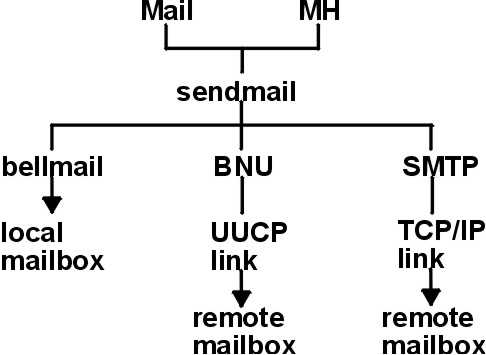
The mail facility provides a method for exchanging electronic mail (e-mail) with users on the same system or on multiple systems connected by a network. This section documents the mail system, the standard mail user interface, the Internet Message Access Protocol (IMAP), and the Post Office Protocol (POP).
The mail system is an internetwork mail delivery facility that consists of a user interface, a message routing program, and a message delivery program (or mailer). The mail system relays messages from one user to another on the same host, between hosts, and across network boundaries. It also performs a limited amount of message-header editing to put the message into a format that is appropriate for the receiving host.
A mail user interface enables users to create and send messages to, and receive messages from, other users. The mail system provides two user interfaces, mail and mhmail. The mail command is the standard mail user interface available on all UNIX systems. The mhmail command is the Message Handler (MH) user interface, an enhanced mail user interface designed for experienced users.
A message routing program routes messages to their destinations. The mail system message routing program is the sendmail program, which is part of the Base Operating System (BOS) and is installed with BOS. The sendmail program is a daemon that uses information in the /etc/mail/sendmail.cf file, the /etc/mail/aliases file to perform the necessary routing.
Note: In versions earlier than AIX 5.1, the sendmail.cf and aliases files are located in /etc/sendmail.cf and /etc/aliases, respectively.
Depending on the type of route to the destination, the sendmail command uses different mailers to deliver messages.

The following is a list of the tasks for which you, the mail manager, are responsible.
To configure the /etc/rc.tcpip file so that the sendmail daemon will be started at system boot time:
With this change, the system will start the sendmail daemon at boot time.